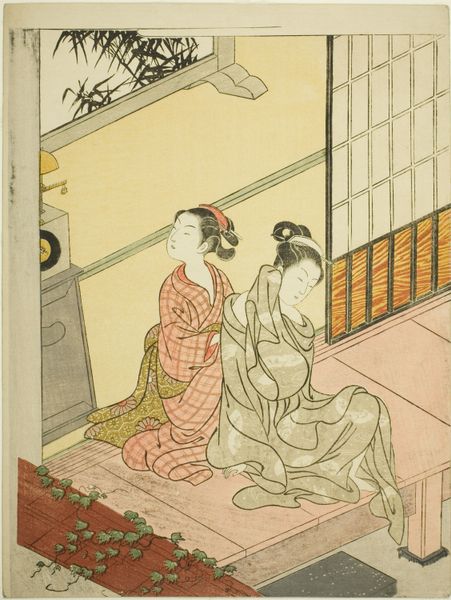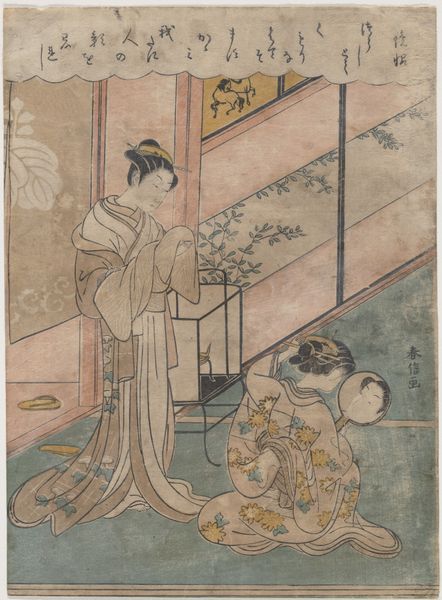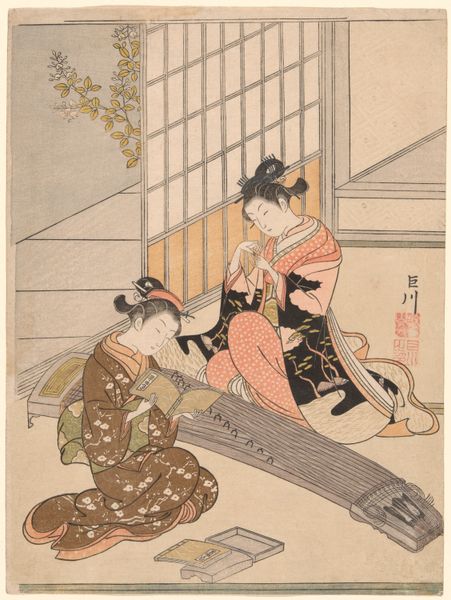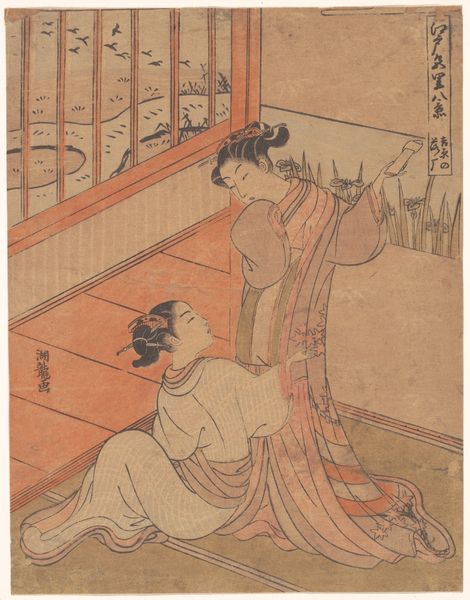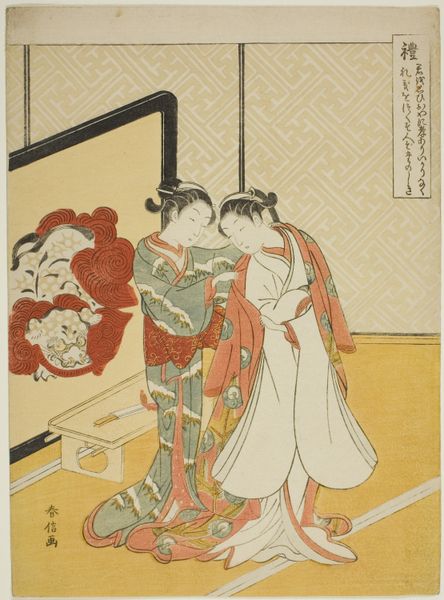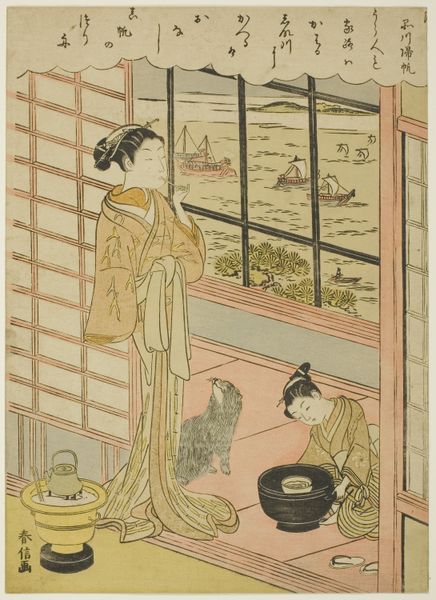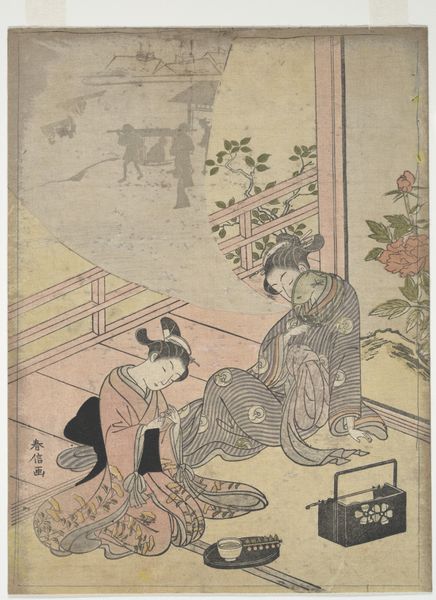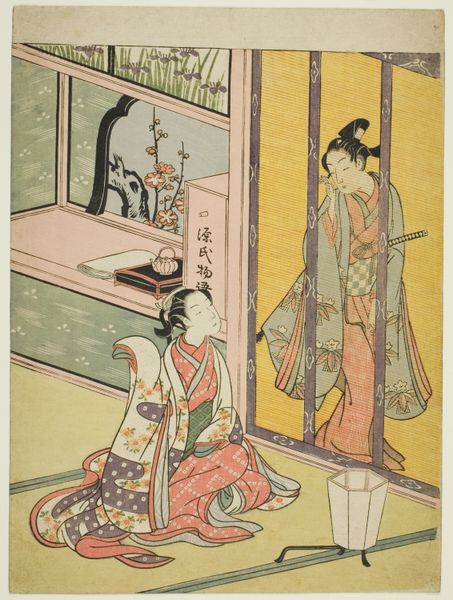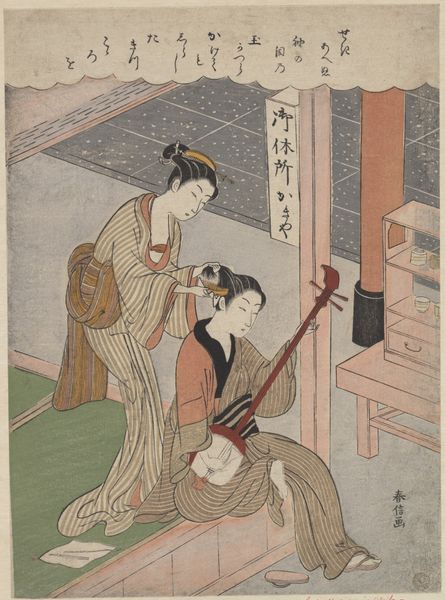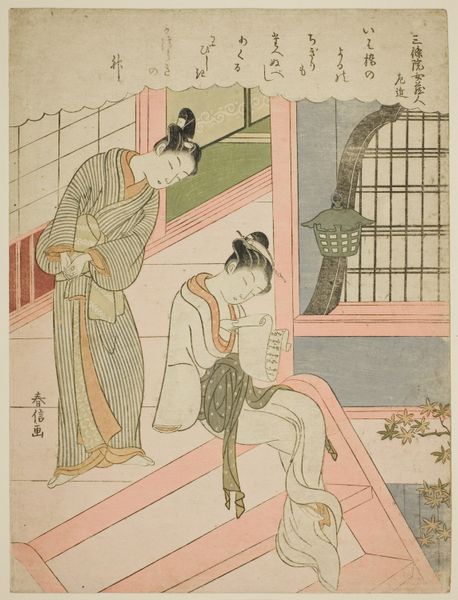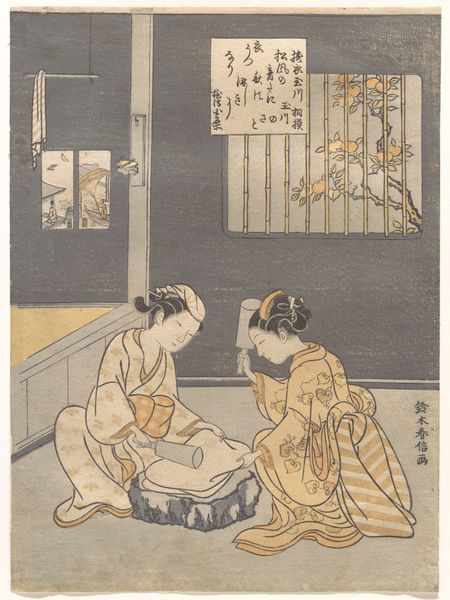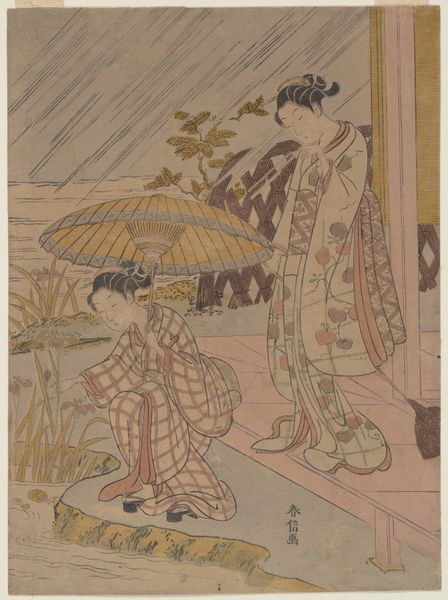
The Evening Bell of the Clock (Tokei no bansho), from the series "Eight Views of the Parlor (Zashiki hakkei)" c. 1766
0:00
0:00
# print
#
asian-art
#
ukiyo-e
#
genre-painting
Dimensions: 28.5 × 21.7 cm (11 1/4 × 8 1/2 in.)
Copyright: Public Domain
Curator: The Art Institute of Chicago is home to "The Evening Bell of the Clock," a print from the series "Eight Views of the Parlor," created around 1766 by Suzuki Harunobu. Editor: It's surprisingly intimate, isn't it? The pastel colors lend a serene quality to this very private moment of two women in a domestic interior. Curator: Indeed. Harunobu’s work provides valuable insight into the cultural importance of private life and leisurely artistic pursuits among urban classes. The "Eight Views" series echoes earlier Chinese landscape painting but transposed to interior spaces. Editor: That clock, prominently displayed – what does it represent, do you think? Time as a symbol of the transience of beauty, perhaps? Or a quiet acknowledgement of societal expectations? The woman adjusting her collar almost seems to pause at its sound. Curator: Well, the depiction of the clock and the quiet domesticity served as signifiers of a kind of elite social milieu in Japan at this period. Clocks in themselves carried symbolic weight and they weren't ubiquitous as they are now. Owning a clock such as the depicted here was a great status symbol. Editor: Status symbols cleverly embedded within an ostensibly simple genre painting. The inclusion of these specific images and themes in prints served as powerful reminders of identity. The viewer would find great pleasure in seeing themselves reflected back. I wonder if this series gained social traction for that very reason? Curator: Very likely. And ukiyo-e prints, due to their affordable pricing and ease of distribution, democratized art viewership among various social classes and made artistic statements far more socially impactful and easily reproduced and circulated. Editor: The beauty in these visual reminders certainly adds an element to the understanding and continued awareness of what has come before. Curator: Absolutely, and considering the complex interplay of social status and artistic representation opens up greater critical consideration. I'm so pleased we were able to contemplate it here today.
Comments
No comments
Be the first to comment and join the conversation on the ultimate creative platform.
